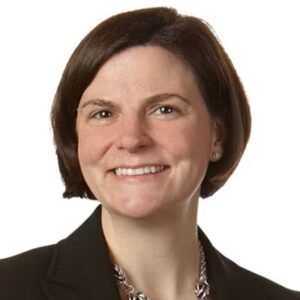Over the past decade, we have heard the steady message that higher education is at a crossroads. Student frustration over the high cost—and lack of transparency—of earning a degree has clashed with the ever-increasing costs of operating an academic enterprise. Yet, change has happened in pockets, and slowly. Trends facing higher education suggest that we may finally be approaching the tipping point at which institutions must accelerate transformation or face significant financial headwinds.

Many institutions are facing precipitous student enrollment and retention challenges, driven by demographic changes and an increasing number of Americans—56%, according to a recent Wall Street Journal-NORC poll—who have lost confidence in the ROI of a degree. These challenges have wide-ranging implications, not only for universities and colleges but also for our workforce and our society.
More than ever, institutions need to reimagine how they address the questions around affordability and outcomes, which lead to questions around the higher education workforce, risk and resiliency strategy, and business model considerations. While some institutions have launched innovative approaches to enrollment, aligned academic programs to skills needs and boosted faculty recruiting and retention strategies, many others are far behind.
As schools look for common and uncommon solutions, five trends shape where the higher education sector goes from here.
College enrollment reaches its peak
We are nearing the fabled “demographic cliff”—the moment in time when the high school graduating population declines and the pool of “traditional” higher education applicants shrinks. Nationwide, approximately 44 percent of people between the ages of 16-24—around 16.7 million potential students—are not enrolled in any higher education program. However, attracting adult learners, even with some college credits, has also proven tremendously difficult for traditional “residential” colleges and universities. Successful institutions should define key audiences and value propositions and scale back on underperforming areas to meet this new population’s differing needs. Institutions should also develop innovative, skills-based academic offerings to deliver lifelong learning opportunities.
The value of the degree undergoes further questioning

Data continues to prove that a four-year degree more often than not leads to higher wages and job mobility in addition to other non-financial benefits. But these data points are overshadowed by the increasingly hostile view—by parents and prospective students—of the return on investment of a four-year degree. Institutions must provide metrics showing positive, real-world results to make the case for higher education. Higher education institutions should work together in a collective and collaborative effort to demonstrate and communicate the long-term value of the college experience.
The business model faces a full-scale transformation
Higher education costs continue to rise in an unsustainable fashion. With lower enrollment projections, institutions must consider the actual costs of providing education and sustaining operations when setting prices. For colleges and universities to survive and thrive, policymakers, institutions and accreditors should come together to define new ways to deliver learning—perhaps even by rethinking the standard 120 credits required for a degree. Creating universally accepted certification and upskilling/reskilling programs could better align schools with workforce development needs and make education more accessible for more people.
Talent management becomes a strategy
The Great Resignation affected industry and higher education alike. Institutions must bring the same focus and science they place on enrollment management and student success to the employee side. Focusing on the core needs of faculty, student services and research priorities will lead to greater retention and job satisfaction at every level of the organization. Senior leadership turnover is a compounding factor. Fifty-five percent of presidents intend to retire within the next five years, and the talent pipeline within the academic enterprise is insufficient. Governance boards and senior leaders should consider looking for talent from diverse backgrounds who can bring fresh perspectives on the future of higher education and carefully consider the support needed to create long-term success and sustainability.
The magnitude of risks demands a new response paradigm
While the pandemic tested schools’ public health preparedness, health emergencies are only one of many risks that schools must address. Natural disasters, ransomware attacks, the tragedy of campus shootings — the list of potential threats is long, and the capability of institutions to prepare and respond is in short supply. Effective leaders will focus resources prudently to minimize or mitigate the impact of these events on the school community and to react quickly if and when an event occurs. Developing processes, policies and actions requires leaders to consider the “what ifs” and align resources to address the highest impact threats. This means that risk management should not only be the domain of the general counsel or the audit committee. It should engage all departments, as they all have a stake in the outcomes.
The pervasive narrative around declining public trust in higher education can—and must—be countered. A closer look across institutions reveals innovation and new ideas. Models that put the student and long-term outcomes at the center of the discussion are gaining traction in some corners of the higher education community. To ensure a vibrant future for higher education, institutions across the spectrum must come together to evolve into the next generation of academia and demonstrate and communicate the tremendous impact of higher education on our lives and society.
Cole Clark, a managing director at Deloitte Services LP, brings more than 30 years of experience helping the higher education community navigate a range of issues, including revenue challenges, administrative modernization, technology transformation, Future of Work, hybrid and online modalities, enterprise risk and resiliency and the student experience.
Megan Cluver is a principal for Deloitte Consulting LLP focusing on transforming operating models to serve higher education institutions. She also serves as vice chair of the Board of Trustees for the Vermont State College System.







